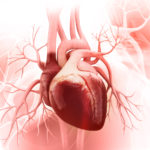ADHD Diagnosis and Management: What Pediatric Providers Need to Know
ADHD Diagnosis and Management: What Pediatric Providers Need to Know https://pediatricsnationwide.org/wp-content/themes/corpus/images/empty/thumbnail.jpg 150 150 Emily Siebenmorgen Emily Siebenmorgen https://pediatricsnationwide.org/wp-content/uploads/2023/05/Emily.Siebenmorgen-scaled-e1684876333147.jpg- May 24, 2023
- Emily Siebenmorgen
In a recent episode of PediaCast CME, host Mike Patrick, MD, reviews ADHD diagnosis and management.
Attention deficit hyperactivity disorder (ADHD), previously known as attention deficit disorder (ADD), is a relatively common neurodevelopmental disorder. While boys are at least two times more likely to be diagnosed with ADHD, an estimated 8% of youth have ADHD. The exact cause of ADHD hasn’t been identified, and it can present in a variety of ways. Not all patients with ADHD will have traditional hyperactive behaviors; any combination of inattentive and/or hyperactive symptoms could lead to an ADHD diagnosis.
In this episode of PediaCast CME, podcast guests Abigail Caserta, PhD, pediatric psychologist at Nationwide Children’s Hospital and Kristina Jiner, MD, pediatric psychiatrist at Nationwide Children’s, join Dr. Mike Patrick to discuss what ADHD is and how it can be diagnosed and managed in pediatric patients.
What are the primary signs of ADHD, and what are some less common ones?
- Hyperactivity: This doesn’t have to mean a kid is running around all of the time. A child who is constant fidgeting, talking and having trouble waiting their turn can also be showing signs of hyperactivity.
- Impulsivity: When we think of impulsivity in the context of ADHD, we might think of behaviors that are physical or destructive. But it’s also important to consider emotional impulsivity that may not manifest as aggression. This can also present as kids going from 0 to 100 emotionally with the flip of a switch.
- Inattentiveness: Conversely, a child may be unable to focus on a task for a very long time. There may be a kid who is frequently daydreaming or seems to be disorganized from the state of their locker, bookbag or bedroom. Relatedly, repeatedly losing things necessary for tasks and activities, like homework and lunch boxes, can be indicative of inattention.
Another sign to keep an eye out for is a child struggling with interacting with others. They may have trouble making friends because they have a tendency of interrupting or hitting others. Look at how the child is behaving at home. Are they getting along with their siblings? Are they capable of sitting through a meal at the dinner table?
Diagnosing ADHD
One of the most important things to know when distinguishing ADHD from other conditions is that it’s not necessary to undergo psychological testing to reach a diagnosis. Testing can be a component of that diagnostic process, but it’s not required. A clinical interview that involves information from multiple sources – which may come from the child, parents, daycare providers, coaches and teachers – can be used to identify symptoms that are showing up in more than one setting. The more information you have the better.
The other thing to look for is the history. It’s possible for a child who has never had any concerns for ADHD to have ADHD. But typically, when looking back, you’re going to find some evidence. It may be subtle, especially if the child is above average intellectually, but there are usually signs. A good history on those earlier years can be incredibly helpful.
Drs. Caserta and Jenner recommend Vanderbilt ADHD assessment forms because they’re free and can readily be given to parents and teachers. They like to get those whenever possible for both diagnosis and follow-up. The Conners scale test is another option that some people may use as well. The long-form ones are particularly helpful for making a diagnosis, while the short-form ones are great to consider when evaluating for changes medications or dosing levels.
Treatment Strategies for ADHD
Medication is often a component of treatment of ADHD, but it’s not the only option. Many behavioral strategies can be simple to implement with a lot of science behind them.
In school settings, receiving consistent feedback with daily behavior report cards and communication between parents and teachers can help kids develop good habits to manage their workloads. Many children with a diagnosis are also eligible for an independent education plan (IEP) under “other health impaired,” or OHI. While the child’s health care team may not be devising those IEPs, they may work with families to raise awareness for these programs.
For older children, incorporating behavioral strategies from Cognitive Behavioral Therapy (CBT) may be an option to help children stay on top of their schoolwork and not need as much support from parents.
On the medication front, there are a few types of ADHD medications that can be broken down into groups — stimulant and nonstimulant medications.
Stimulant medications, which work to increase norepinephrine and dopamine levels, especially in the pre-frontal cortex:
- Amphetamines, such as Adderall and Vyvanse
- Methylphenidates, such as Ritalin and Concerta
Nonstimulant medications, which work to limit the reuptake of norepinephrine in the prefrontal cortex:
- Alpha adrenergic agonists, such as clonidine and guanfacine
- Longer-acting alpha-adrenergic agonists, such as Kapvay and Intuniv
- Selective norepinephrine reuptake inhibitors, such as Strattera and Qelbree (Qelbree is unique from all other ADHD medications because the capsule can be opened to sprinkle its contents into foods, like applesauce or pudding, for easier administration.)
Data supports prescribing simulants as first-line treatment for ADHD because of their efficacy and safety. Nonstimulants may be a solution in cases where stimulants are insufficient for, or not tolerated by, the child.
Finding the “sweet spot” for medication dosage can be a challenge for physicians and frustrating for patients. Consider starting a patient with a stimulant at the lowest dose available. The beauty of the stimulant medications is that they are relatively fast-acting, which means you can evaluate dosage levels very quickly.
After about five days at the lowest possible dose, it’s time to evaluate the effects. Look to see if symptoms have improved take note of how long the medication lasts. Every child will be different, but younger children will typically require more medication than older children due to their higher metabolisms.
About the author
Emily Siebenmorgen is a Science Communication Specialist at Nationwide Children's Hospital with a passion for making research findings accessible. From her time writing at Battelle and AWRI's Center for Injury Research and Policy, she has experience distilling complex topics into simple takeaways for both professional and consumer audiences. Emily earned her BS in Psychology and BA in Strategic Communication from The Ohio State University.
-
Emily Siebenmorgenhttps://pediatricsnationwide.org/author/emily-siebenmorgen/
-
Emily Siebenmorgenhttps://pediatricsnationwide.org/author/emily-siebenmorgen/
-
Emily Siebenmorgenhttps://pediatricsnationwide.org/author/emily-siebenmorgen/September 29, 2022
-
Emily Siebenmorgenhttps://pediatricsnationwide.org/author/emily-siebenmorgen/October 17, 2022
- Posted In:
- Uncategorized







